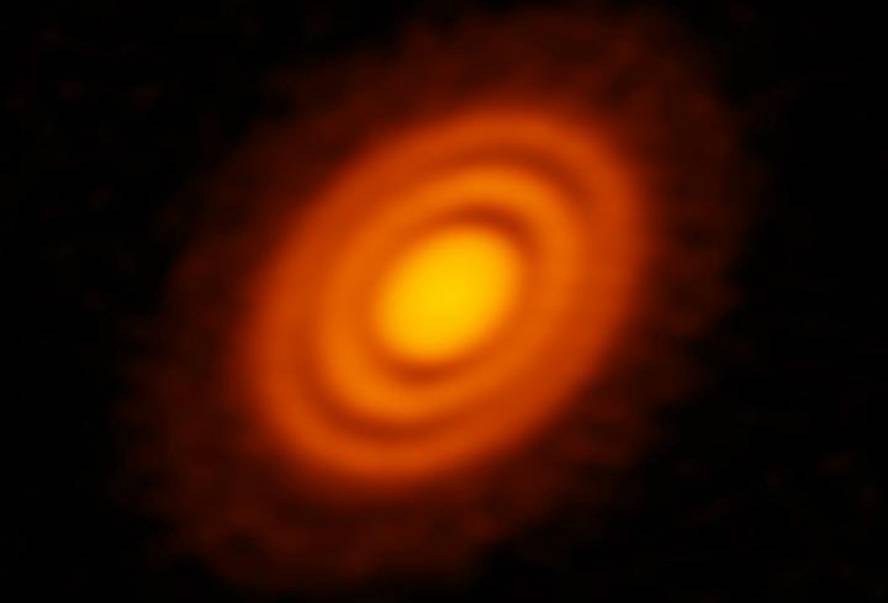Observe the birth of two planets with the ALMA telescope

The ALMA telescope has detected two newborn planets in the Atacama Desert, according to the Physical Review Letters magazine this week. In our galaxy, but these planets are forming outside the solar system in discs of dust and gas around the star HD 163296. Before it was clarified that the appearance of rings and holes in the gas discs of the stars could be a sign of the formation of the planets, but it is the first time it has been seen.
Star HD 163296 has the same mass as two Suns. It is a young star, created 5 million years ago, which is surrounded by 3 large discs of dust and gas: the closest is 60 astronomical units of the star (an astronomical unit is equivalent to a distillation from the Sun to the Earth) and the other two to 100 and 160 astronomical units. That is, they are all further from our solar system than the area of frozen bodies, beyond the orbit of Neptune. Researchers have clarified that so far they did not believe it was possible to create planets at such a large distance from the star. In addition, the two emerging exoplanets have a size similar to that of Saturn, so they are large.
In addition to the dust surrounding the star, gas has also been the key to detecting newborn planets. “1% of the disc material corresponds to dust particles, 99% being gas. Therefore, if we only look at the dust we could not know if the ring was formed by a planet or another phenomenon. To know if there are really planets you have to look at the behavior of gas. In this work we’ve analyzed powdered gas for the first time,” explains Andrea Isella, a researcher at Rice University in Texas.
The ALMA telescope has observed the creation of two planets through the ALMA Observatory. Video in Vimeo in English.





